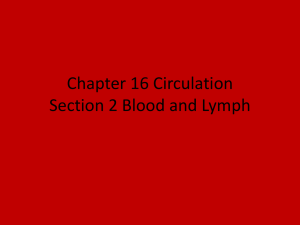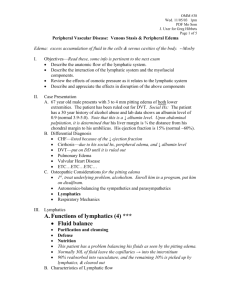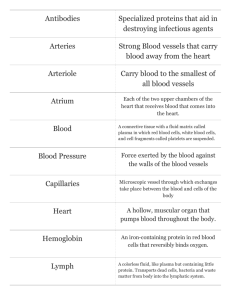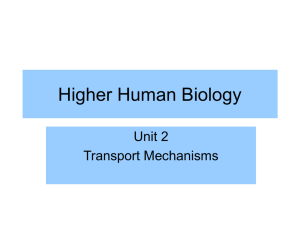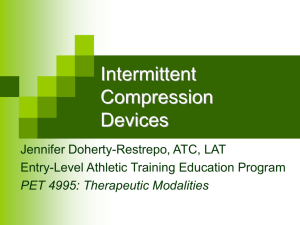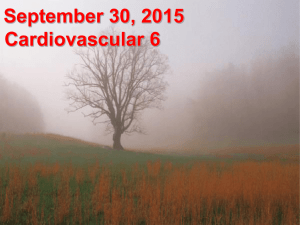The properties and contents of lymph
advertisement
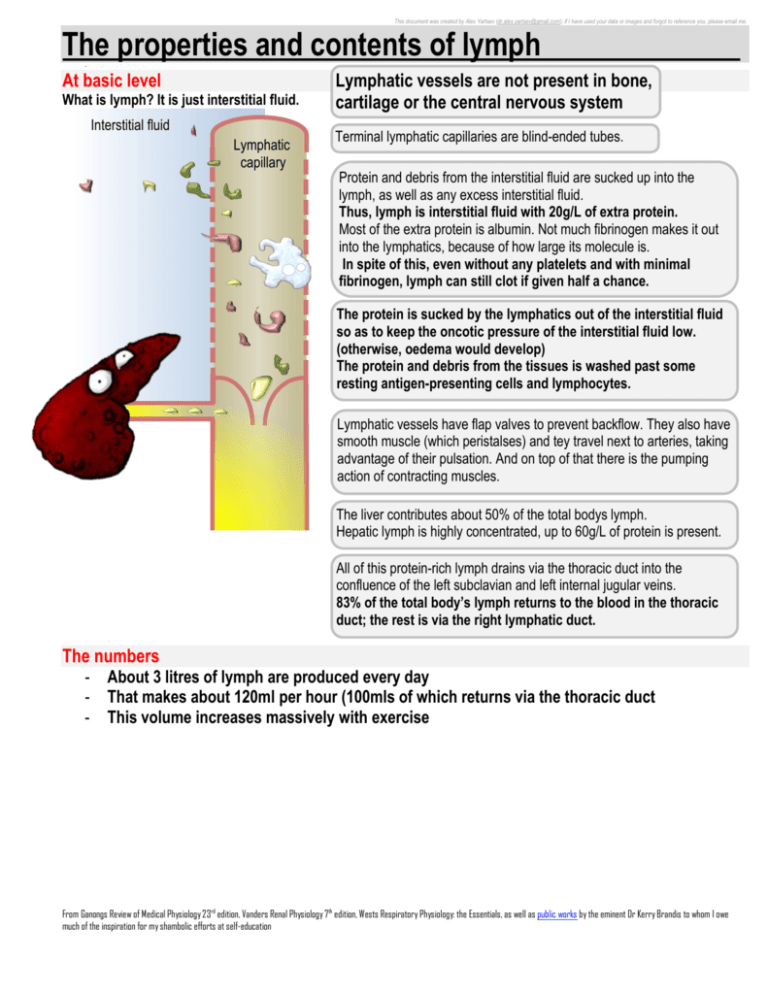
This document was created by Alex Yartsev (dr.alex.yartsev@gmail.com); if I have used your data or images and forgot to reference you, please email me. The properties and contents of lymph - At basic level What is lymph? It is just interstitial fluid. Interstitial fluid Lymphatic capillary Lymphatic vessels are not present in bone, cartilage or the central nervous system Terminal lymphatic capillaries are blind-ended tubes. Protein and debris from the interstitial fluid are sucked up into the . lymph, as well as any excess interstitial fluid. Thus, lymph is interstitial fluid with 20g/L of extra protein. Most of the extra protein is albumin. Not much fibrinogen makes it out into the lymphatics, because of how large its molecule is. In spite of this, even without any platelets and with minimal fibrinogen, lymph can still clot if given half a chance. The protein is sucked by the lymphatics out of the interstitial fluid so as to keep the oncotic pressure of the interstitial fluid low. (otherwise, oedema would develop) The protein and debris from the tissues is washed past some resting antigen-presenting cells and lymphocytes. Lymphatic vessels have flap valves to prevent backflow. They also have smooth muscle (which peristalses) and tey travel next to arteries, taking advantage of their pulsation. And on top of that there is the pumping action of contracting muscles. The liver contributes about 50% of the total bodys lymph. Hepatic lymph is highly concentrated, up to 60g/L of protein is present. All of this protein-rich lymph drains via the thoracic duct into the confluence of the left subclavian and left internal jugular veins. 83% of the total body’s lymph returns to the blood in the thoracic duct; the rest is via the right lymphatic duct. The numbers - About 3 litres of lymph are produced every day That makes about 120ml per hour (100mls of which returns via the thoracic duct This volume increases massively with exercise From Ganongs Review of Medical Physiology 23rd edition, Vanders Renal Physiology 7th edition, Wests Respiratory Physiology: the Essentials, as well as public works by the eminent Dr Kerry Brandis to whom I owe much of the inspiration for my shambolic efforts at self-education




